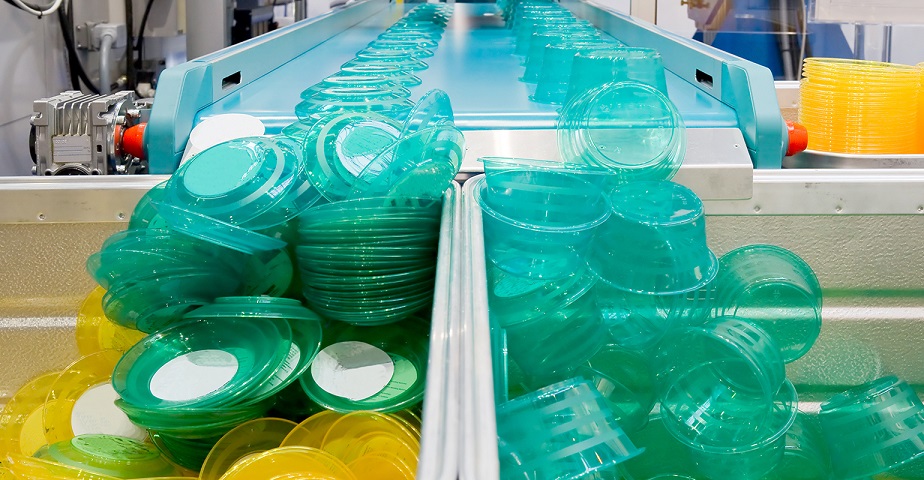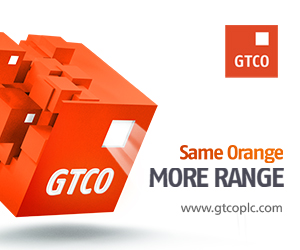Brands/Products
The Role of Plastic In Cost-Effective Product Packaging

Packaging is crucial in protecting and preserving goods, from the smallest household items to large-scale industrial products. In recent years, plastic has emerged as one of the most popular materials for cost-effective product packaging.
This article delves into the various aspects of plastic packaging and its benefits, highlighting why it’s become the material of choice for numerous industries.
- The Popularity Of PP Material In Packaging
Polypropylene, or PP material, is a type of plastic commonly used in product packaging. This versatile material boasts numerous advantages contributing to its growing popularity in the packaging industry.
One of PP material’s most notable properties is its high melting point, allowing it to withstand high temperatures without deforming or melting. This feature makes it suitable for microwave-safe containers and other heat-resistant applications.
Furthermore, PP material is resistant to moisture, which helps preserve the freshness and quality of packaged products. Its high tensile strength ensures that the packaging can withstand transportation and handling; this reduces the risk of damage to the product. With these combined attributes, PP material has become popular for packaging applications in various industries, including food and beverage, pharmaceuticals, and consumer goods. Along with packaging automation for small businesses, plastic can be a fantastic packaging solution.
- Improved Brand Visibility
Plastic packaging can play a significant role in boosting brand visibility. Thanks to its design flexibility, plastic allows for the incorporation of eye-catching graphics, logos, and colors that capture the attention of potential customers. These design elements can help differentiate a product from its competitors and create a strong brand identity that resonates with consumers.
Clear plastic packaging, such as PET or PVC, can also provide a ‘window’ that allows consumers to view the product before purchasing, leading to more informed buying decisions and increased trust in the brand. By investing in high-quality, visually appealing plastic packaging, businesses may make a lasting impression on consumers and build brand loyalty.
- Environmental Benefits Of Plastic Packaging
The environmental benefits of plastic packaging are often overlooked due to concerns about plastic pollution. However, when properly managed, plastic packaging can significantly reduce waste and conserve resources. For instance, plastic packaging often requires less material than alternatives like glass or cardboard, resulting in less waste generated per package.
Moreover, lightweight plastic packaging reduces fuel consumption during transportation, ultimately lowering greenhouse gas emissions. However, it is crucial to emphasize the need for proper waste management and recycling systems to mitigate plastic’s negative environmental effects. Efforts to reduce single-use plastics and promote more sustainable packaging materials should also be considered to minimize the overall environmental impact of plastics.
Businesses can minimize their environmental footprint by choosing plastic packaging and incorporating recycling programs while maintaining cost-effectiveness.
- Customization And Design Flexibility
Plastic packaging offers unparalleled customization options, which can help businesses differentiate their products and enhance brand recognition. With advanced techniques like injection and blow molding, manufacturers can create intricate designs, textures, and embossed patterns.
In addition to custom shapes and sizes, plastic packaging allows for a wide range of color options, enabling businesses to align their packaging with their brand identity. Furthermore, printing technologies like flexographic, offset, and digital printing can be used to apply high-quality graphics and text directly onto plastic packaging, providing clear and durable labeling that won’t fade or peel.
- Enhanced Product Protection
Plastic packaging offers excellent barrier properties, shielding products from moisture, air, and contaminants. These protective qualities help extend the shelf life of products and maintain their quality, ultimately leading to increased customer satisfaction.
In addition to its barrier properties, plastic packaging can provide impact resistance and cushioning, protecting fragile items from damage during transportation and handling. This feature is crucial for products such as electronics, glassware, and pharmaceuticals, where the integrity of the product is crucial for functionality and safety.
- Durability And Strength
Despite its lightweight nature, plastic packaging provides remarkable durability and strength. Different plastics offer varying rigidity, impact resistance, and flexibility, allowing manufacturers to select the most suitable material. For example, high-density polyethylene (HDPE) is known for its excellent strength-to-weight ratio, making it ideal for heavy-duty applications. In contrast, low-density polyethylene (LDPE) offers increased flexibility and is better suited for lightweight items.
Moreover, plastic packaging materials can be engineered to provide additional strength through techniques like corrugation or the addition of reinforcing fibers. These enhancements can help ensure that the packaging can withstand the stresses of transportation, handling, and storage without compromising the safety and integrity of the product.
- Cost-Effectiveness
One of the primary reasons behind the widespread use of plastic in product packaging is its cost-effectiveness. Plastic is relatively inexpensive to produce and transport compared to other materials like glass or metal due to its lightweight nature, which results in lower shipping costs and reduced energy consumption during manufacturing.
Additionally, plastic materials can be easily mass-produced using high-speed manufacturing processes, such as injection molding and extrusion, further reducing production costs.
The cost savings achieved by using plastic packaging directly benefit manufacturers and, ultimately, consumers too. Lower production and shipping costs can translate into more competitively priced products, which can help businesses gain a competitive edge in the marketplace.
- Ease Of Handling And Storage
From a logistics standpoint, plastic packaging offers numerous benefits in terms of handling and storage. Plastic packages are lightweight, which makes them easier to handle and transport, reducing the risk of workplace injuries and accidents.
In terms of storage, plastic packaging can be easily stacked and stored, resulting in efficient space utilization in warehouses and retail stores. Many plastic packaging designs also include features such as handles, easy-open lids, or resealable closures, providing added convenience for retailers and consumers.
- Consumer Convenience
Beyond the advantages for manufacturers, plastic packaging also offers convenience to consumers. Plastic packages are easy to open and reseal, which adds to their appeal. This feature can be particularly beneficial for food products since it allows consumers to maintain freshness and prevent spoilage after opening.
Additionally, plastic’s transparent nature allows consumers to view the product before purchasing, resulting in more informed buying decisions. In some cases, plastic packaging can also be used for portion control, with products like single-serving snack packs or resealable bags that help consumers manage their consumption.
- Innovations In Sustainable Plastic Packaging
The industry has made significant developments in sustainable alternatives by recognizing the environmental concerns associated with traditional plastic packaging. Innovations like biodegradable plastics, which break down under specific ecological conditions, and plant-based materials, such as polylactic acid (PLA) made from corn starch or sugarcane, pave the way for a greener future in packaging.
These sustainable options help reduce the environmental impact of plastic packaging and allow manufacturers to cater to the growing demand for eco-friendly products. As companies continue to invest in research and development, more sustainable, cost-effective plastic packaging solutions are expected to emerge, further solidifying plastic’s role in the packaging industry.
Conclusion
The role of plastic in cost-effective product packaging is evident across various industries. Its numerous advantages, such as lightweight properties, durability, customization options, and cost-effectiveness, make it an attractive choice for manufacturers and consumers.
As the packaging industry continues to innovate and develop sustainable alternatives, the future of plastic packaging looks promising in terms of economic and environmental benefits.
Brands/Products
MAGGI Unveils ‘Taste of Christmas’ Campaign

MAGGI, the culinary brand from Nestlé Nigeria, has announced the launch of its festive campaign, Taste of Christmas, designed to celebrate the sights, sounds, and flavours that define the Nigerian Christmas experience.
Central to the campaign is a collaboration with Nigeria’s fast-rising pop star Qing Madi and the renowned Loud Urban Choir, resulting in a new Christmas anthem titled Taste of Christmas.
Now available across all major music streaming platforms, the song blends contemporary sound with cultural warmth, evoking the joy of family, togetherness, and shared meals that characterize the season.
Extending beyond music, the Taste of Christmas campaign will roll out a curated series of festive recipes and culinary inspiration over a 12-day period. The collection features creative twists such as Coco Bongus, alongside beloved Nigerian classics, encouraging families to explore new flavours while enjoying MAGGI’s trusted range of seasonings.
Commenting on the campaign, the Category Manager for Culinary at MAGGI, Ms Funmi Osineye, said, “Christmas is a time when family, culture, and shared experiences come alive. With the Taste of Christmas campaign, we set out to create a platform that resonates strongly with today’s young adults while still celebrating the warmth of home. Partnering with Qing Madi and The Loud Urban Choir allows us to connect music and food in a way that feels authentic, modern, and deeply Nigerian.”
The campaign further reflects MAGGI’s commitment to celebrating home-grown talent, nurturing culinary creativity, and strengthening the role of food as a unifying force in Nigerian homes.
Consumers can access festive recipes, campaign content, and the Taste of Christmas anthem on MAGGI’s digital platforms and social media channels. Conversations around the campaign can be followed using #MAGGIChristmas.
MAGGI is a leading culinary brand from Nestlé Nigeria, committed to inspiring better cooking habits and bringing families together through delicious, nutritious meals.
Brands/Products
FG Suspension of Sachet Alcohol Ban Excites NECA

By Modupe Gbadeyanka
The decision of the federal government to suspend the ban on alcohol produced in sachets has been welcomed by the Nigeria Employers’ Consultative Association (NECA).
The Director-General of the group, Mr Adewale-Smatt Oyerinde, described it as a right step in the right direction because it respects existing National Assembly resolutions and restores regulatory clarity.
Recall that recently, the Office of the Secretary to the Government of the Federation (OSGF) ordered the suspension of the policy due to concerns raised by the House of Representatives Committee on Food and Drugs Administration and Control.
In a statement, the NECA chief said the immediate suspension of all enforcement actions relating to the proposed ban on sachet alcohol and 200ml PET bottle products, pending the conclusion of consultations and the issuance of a final policy directive, was good for the industry and the economy.
According to him, the sachet and PET segment of the alcoholic beverage industry accounts for a significant portion of the estimated N800 billion invested in the sector and supports thousands of direct and indirect jobs in manufacturing, packaging, logistics, wholesale and retail.
He stressed that in an economy already struggling with high unemployment and rising business costs, abrupt policy measures that threaten existing jobs and legitimate investments would be counterproductive.
“We fully acknowledge the need to address public health concerns, especially regarding children and young people, but the solutions must be evidence-based and carefully designed so as not to drive activities into the informal and unregulated economy or encourage illicit products.
“We are looking forward to a deepened consultation to enable the protection of jobs, livelihoods and legitimate investments, etc., while also ensuring that public health objectives are effectively and sustainably achieved,” Mr Oyerinde said.
Brands/Products
Lafarge Africa Debuts Beyond Buildings Campaign

By Adedapo Adesanya
Top building materials and solutions brand, Lafarge Africa Plc, has unveiled a new thematic campaign tagged Beyond Buildings geared towards highlighting its impact and contributions to Nigeria’s infrastructural development.
The campaign was unveiled by the chief executive of Lafarge Africa, Mr Lolu Alade-Akinyemi, on Monday, December 8, 2025, in Lagos.
Mr Alade-Akinyemi noted that the campaign highlights how Lafarge, through innovative and sustainable building solutions, has continued to shape the socio-economic development and progress of Nigerians and Nigeria by contributing to the construction of various structures, including iconic buildings and bridges, stadiums, hospitals, roads, and more, ultimately aiding the nation’s overall growth.
“For over six decades, beyond the manufacturing of building solutions, we have partnered in building the very foundation of Nigeria’s infrastructural development and its future. With our innovative solutions, we have made a significant contribution to our nation’s progress by providing essential building materials for numerous landmark projects.
“This also extends to the expansion of our production capacity nationwide, creating jobs and livelihoods, bringing development to communities, and introducing innovative products to meet the ever-evolving construction needs of Nigeria,” he said.
He described the campaign as a celebration of strength, innovation, history, shared success, and the power of progress, noting that it is the story of the company’s humble beginnings, which dates back to 1960 when its first factory began production.
“The Beyond Buildings campaign is the story of our vision, which is to be the leading building solutions company, driving innovation and operational excellence to create a greener planet and enable national progress. It shifts the narrative from our products to the profound impact we make on human lives. Our materials transform into national landmarks, powering jobs, livelihoods, and development across every state,” he noted.
The thematic campaign Beyond Buildings spotlights how Lafarge has been a strong and steady partner in building infrastructure that underpins Nigeria’s socio-economic progress.
“We are celebrating our enduring legacy and committing to a new era of sustainable and innovative growth. This campaign empowers us to tell that story with confidence and clarity,” he added.
Delivering his remarks, the Commercial Director of Lafarge Africa, Mr Gbenga Onimowo, stressed that the premiere viewing is an opportunity to share the compelling reasons why the company’s story, ‘Beyond Buildings,’ must be told.
Mr Onimowo stated that the campaign aims to reinforce the company’s position at the heart of Nigeria’s construction growth since independence, as demonstrated by its extensive footprint of infrastructure development across every corner of the country.
‘However, our contribution is not merely about building solutions including cement, mortar, plaster of paris and readymix concrete. It’s about the shared future and the national development we actively enable,’ he said.
He stated that the campaign was designed to move the conversation past the physical structures and shine a light on the socio-economic impact that the company helps create.
“Our campaign highlights the immense progress built on the concrete of trust since 1960. Our materials are integral to iconic landmarks like the National Theatre, 1st and 2nd Niger Bridges, Third Mainland bridge, Lekki-Ikoyi link bridge, the National Assembly Complex and countless national, commercial, academic and residential structures nationwide,” he added.
The event was well attended by distinguished stakeholders from the building and construction sector as well as the arts, culture, media and entertainment industry, alongside many of the company’s esteemed customers including veteran Nollywood actors Richard Mofe-Damijo (RMD) and Kate Henshaw.
-

 Feature/OPED6 years ago
Feature/OPED6 years agoDavos was Different this year
-
Travel/Tourism9 years ago
Lagos Seals Western Lodge Hotel In Ikorodu
-

 Showbiz3 years ago
Showbiz3 years agoEstranged Lover Releases Videos of Empress Njamah Bathing
-

 Banking7 years ago
Banking7 years agoSort Codes of GTBank Branches in Nigeria
-

 Economy3 years ago
Economy3 years agoSubsidy Removal: CNG at N130 Per Litre Cheaper Than Petrol—IPMAN
-

 Banking3 years ago
Banking3 years agoFirst Bank Announces Planned Downtime
-

 Banking3 years ago
Banking3 years agoSort Codes of UBA Branches in Nigeria
-

 Sports3 years ago
Sports3 years agoHighest Paid Nigerian Footballer – How Much Do Nigerian Footballers Earn
















